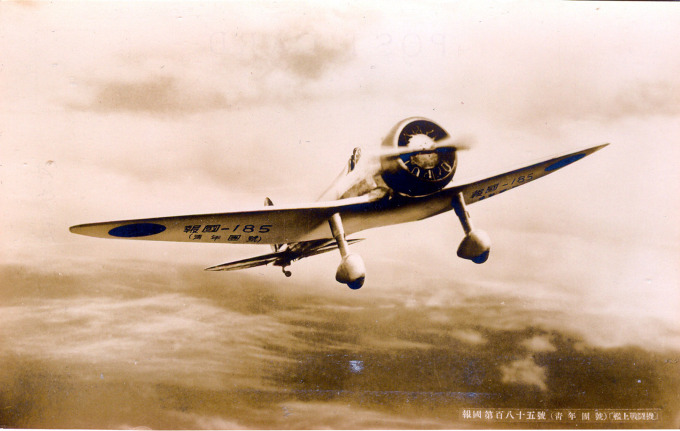 From the wiki: “The Nakajima Ki-27 was the main fighter aircraft used by the Imperial Japanese Army Air Force up until 1940. Its Allied nickname was ‘Nate’. In 1935, the Imperial Japanese Army held a competition between Nakajima, Mitsubishi, and Kawasaki to design a low-wing monoplane to replace the Kawasaki Ki-10 (Army Type 95 Fighter) biplane.
From the wiki: “The Nakajima Ki-27 was the main fighter aircraft used by the Imperial Japanese Army Air Force up until 1940. Its Allied nickname was ‘Nate’. In 1935, the Imperial Japanese Army held a competition between Nakajima, Mitsubishi, and Kawasaki to design a low-wing monoplane to replace the Kawasaki Ki-10 (Army Type 95 Fighter) biplane.
“Conceived by Nakajima engineers Yasumi Koyama and Professor Hideo Itokawa, the Ki-27 embodied the smallest practical airframe that could be designed around the best available radial engine, Nakajima’s Ha-1-Ko … The clean lines of the Ki-27 were in keeping with the old axiom that when an aircraft looks right, it usually flies well.”
– P-40 Warhawk vs Ki-43 Oscar China 1944-45, Carl Molesworth, 2008
“The Ki-27 made its first flight on 15 October 1936. Although it had a slower top speed and worse climb performance than its competitors (the Kawasaki Ki-28 and the Mitsubishi Ki-33), the Army chose the Nakajima design for its outstanding turning ability granted by its remarkably low wing loading. The type was officially accepted into service in 1937 as the Army Type 97 Fighter. In addition to Nakajima, the Ki-27 was also manufactured by Tachikawa Aircraft Company Ltd and Manshukoku Hikoki Seizo KK, with a total of 3,368 built before production ended in 1942.
“The Ki-27 was the Imperial Japanese Army Air Force’s main fighter until the start of World War II. When placed into combat service over northern China in March 1938, the Ki-27 enjoyed air superiority until the introduction of the faster Soviet-built Polikarpov I-16 fighters by the Chinese.
“The Ki-27 also served until the beginning of World War II in the Pacific, escorting bombers attacking Malaya, Singapore, Netherlands East Indies, Burma and the Philippines (where it initially fared poorly against the Brewster F2A Buffalo). The type also saw extensive action against the American Volunteer Group in the early months of the war. Soon outclassed by the American Curtiss P-40 Warhawks, the Ki-27 was replaced in front line service by the Nakajima Ki-43, while surviving examples continued to serve as a trainer.
“One Ki-27 is preserved at the Tachiarai Peace Memorial Museum.”
Maximum speed: 470 km/h (275 mph)
Cruise speed: 350 km/h (218 mph)
Range: 627 km (390 mi)
Ferry range: 1100 km (682 mi)
Service ceiling: 12,250 m (32,940 ft)


Pingback: Nakajima AT-2 (Ki-34), 1937. | Old TokyoOld Tokyo